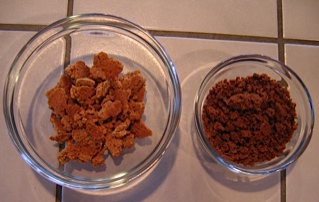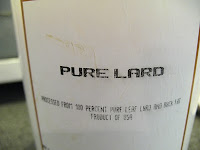This meal satisfies all the requirements for a good recipe these days. Fairly quick to prepare, nutrient dense, tastes good warm and cold, and nutrient dense. I've packed it up for several lunches this week, as the texture/flavor is similar to potato salad. Just call it salmon lentil salad, and everyone will tell you how amazing you are. If you serve it warm, call it casserole. No one will notice.
2 heaping cups lentils
3 cups dense flavorful broth (chicken or fish)
1/4 cup lard
1 lb salmon
cheese - such as parmesan, dill garlic cheddar, romano, etc.
1/3 c yogurt
1 large or 2 small onions
1/2 tsp salt
pinch cayenne
1/2 tsp mustard
generous amount of dill
1/2 tsp curry powder
generous paprika
Soak lentils overnight in filtered water. The water should be double the height of the lentils, as they will triple in volume. Put salmon in the fridge to thaw overnight, if frozen. If you really plan ahead, you can sprout the lentils for a day or so. If you're running last minute, you can do a quick soak with the lentils, and thaw the fish in a bowl of warm water.
Next day, cook lentils in the chicken broth on high-simmer for about a half hour, stirring often. Once they have changed color, they are done. Add lard and salt, and turn off.
While lentils are cooking, mix yogurt with other spices and place salmon on a greased pan. I baked the salmon in the oven, but you could also cook it even faster in a skillet. Cover the salmon with the spiced yogurt, and cook gently. In the oven, 350º for about a half hour, on the stove, medium - low heat for about 5-10 minutes, depending on the thickness of the fish. Either way, check the salmon regularly, fish should break apart with a fork, but should not be overcooked. It will continue to cook a little more after heat is turned off.
Cook onions in a separate pan, with plenty of grease, until cooked through and lightly browned. Add to lentils. If conserving dishes, cook them before the fish, and you can use the same pan to cook the fish in.
Break apart salmon and add yogurt salmon mixture to lentils, along with cheese. Add additional salt and seasonings to taste.
Quick, delicious, and loaded with nutrients!


































